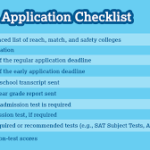The Testing Epidemic in Modern Classrooms

Picture a typical school day in America: rows of students sit silently, pencils scratching against answer sheets or fingers tapping on keyboards, all completing yet another standardized exam. From statewide accountability tests to district benchmarks and college entrance exams, today’s students navigate an assessment landscape more crowded than ever before. This testing culture raises pressing questions about its true educational value and potential consequences.
Why Standardized Testing Persists
Advocates highlight several key benefits of standardized assessments:
- Objective Evaluation Framework
- Creates consistent metrics across diverse schools
- Reveals systemic achievement disparities
- Enables longitudinal tracking of student progress
- Instructional Compass
- Identifies specific skill deficiencies
- Guides targeted intervention strategies
- Provides feedback for curriculum adjustments
- Gateway to Opportunity
- Standardized criteria for higher education admissions
- Facilitates identification of gifted learners
- Mirrors professional licensing exam formats
“Standardized assessments give us crucial insights into educational equity that we simply couldn’t obtain otherwise,” explains Dr. Marcus Reynolds of the National Education Policy Center.
The Mounting Concerns About Testing Overload
A growing coalition of stakeholders voices serious reservations:
- The Time Cost
- Students lose approximately 2.3% of instructional time to testing
- Teachers sacrifice weeks annually to test administration
- Enrichment programs often get sidelined
- Curriculum Distortion
- Increased focus on testable subjects
- Decreased emphasis on creative expression
- Marginalization of social-emotional learning
- Psychological Toll
- 68% of educators report increased student anxiety
- Younger students exhibit testing-related somatic symptoms
- Special needs students face particular challenges
“Assessment should inform teaching, not dictate it,” argues middle school principal Alicia Torres. “When testing becomes the tail wagging the dog, we’ve lost our way.”
Emerging Alternatives and Innovations
Progressive approaches are gaining traction nationwide:
- Strategic Assessment Reduction
- Consolidating redundant evaluations
- Implementing matrix sampling techniques
- Grade-span testing instead of annual assessments
- Authentic Assessment Models
- Comprehensive learning portfolios
- Interdisciplinary project-based evaluations
- Demonstration-based competency checks
- Assessment Evolution
- Scenario-based problem solving
- Constructed-response formats
- Computer-adaptive testing models
Reimagining Educational Measurement
As the debate continues, fundamental questions demand attention:
- How can we balance accountability with meaningful learning?
- What assessment methods truly reflect student capabilities?
- Where should we draw the line between necessary and excessive testing?
The consensus among many education experts is clear: while assessment remains essential, our current approach requires thoughtful transformation. In the words of assessment reform advocate David Mitchell, “The best tests don’t just measure learning—they enhance it. We need assessments that students actually learn from, not just endure.”











